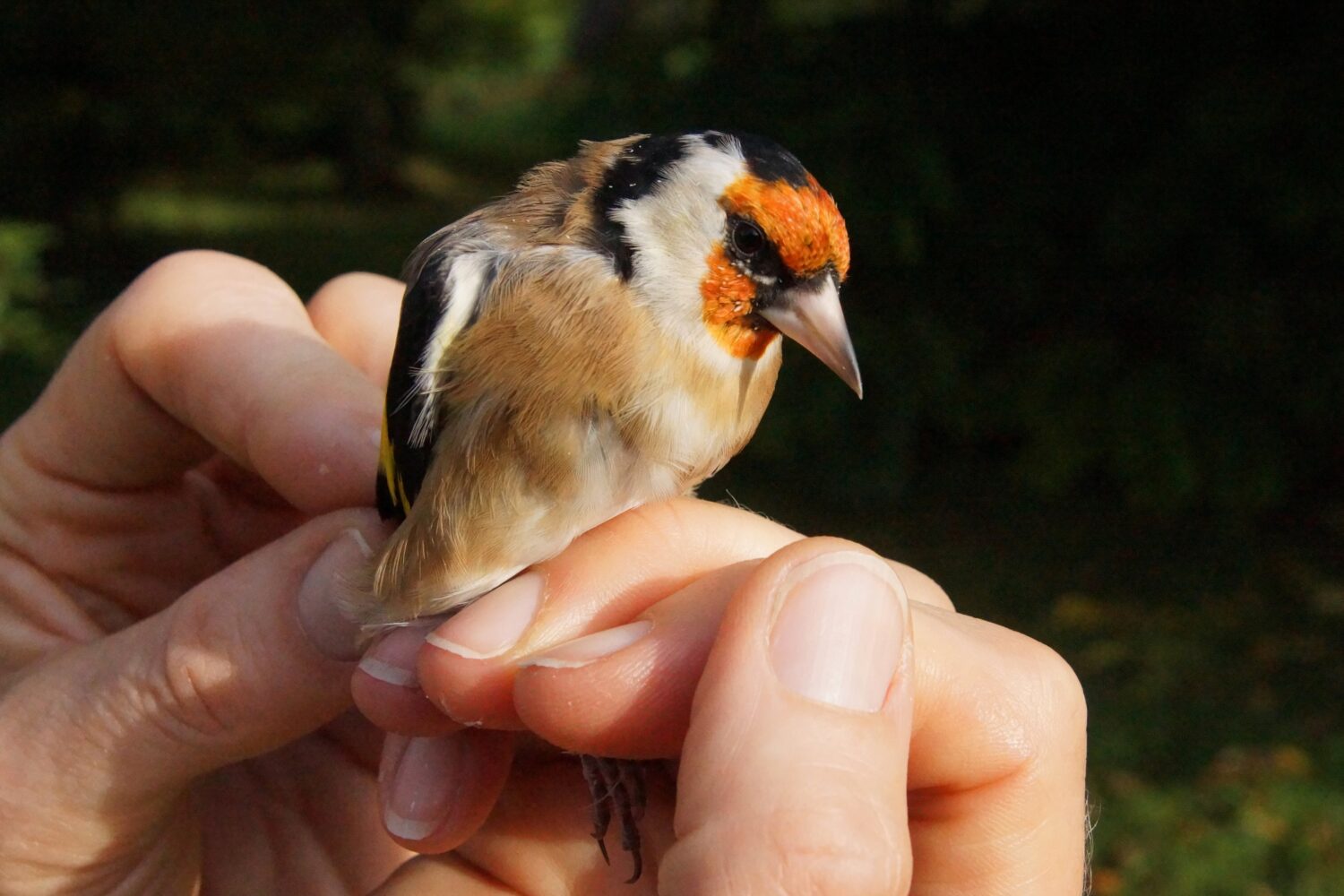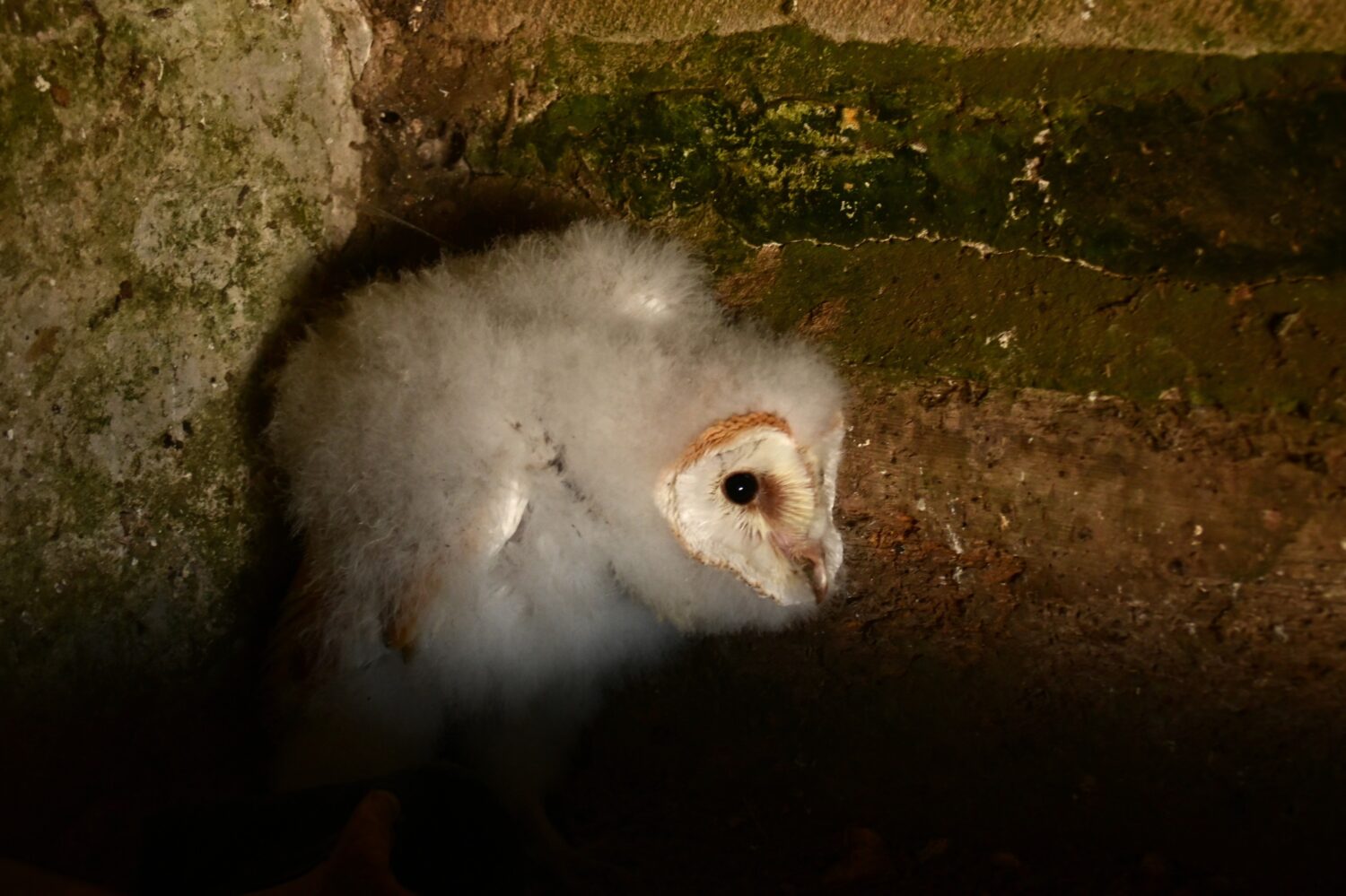North East ornithologist, Phil Hanmer, shares a new update summarising bird ringing across Northumberland throughout October.
One return from the British Trust for Ornithology (BTO) this month was of a Turnstone that I ringed near Craster in January 2015. I don’t ring many waders so I do remember I only caught this bird because it came very close to me by one of the public seats in Craster on a bitterly cold day. It’s sad it was found dead on the 22 September at Seahouses but it has lived for at least eight years. Ringing was possible at Howick on the 8 October when we captured 63 birds (50 new & 13 retraps). The retraps included a male Great Spotted Woodpecker first ringed in 2017 at Howick. The new birds included several Goldcrests, Blackbirds and a single Redwing (see photo) and several Goldfinch. One of these was a particularly interesting Male; being well marked with longer wings and a heavier weight than usual. My book tells me that this is likely to be of the Continental (carduelis) race rather than our usual more sedentary britannicus (see photo).
Initially, the 9 October looked like it was going to be a quieter morning but it actually got busier, and we eventually processed 69 birds (58 new & 11 retraps). There were more Goldcrests and Blackbirds and the delight of our regular little rarity a Yellow-Browed Warbler (see photo). These are always special not only are they interesting in that they seem to be pioneering a new migration route from Siberia & Asia down through Europe to Africa but they always look perky and healthy despite their travelling 100’s (if not 1,000’s) of miles and weighing only 5 grams (similar to Goldcrests). About to depart to Scotland for a late holiday I will say no more about Howick Ringing Station at this point but instead, report on this year’s…

BARN OWL BREEDING SEASON 2021:
This study (of around 100 sites) in North Northumberland (outside the National Park) indicates that this was the worst breeding season since 2006 (even worse than 2018). At only 15% occupancy this was half the long-term average of 30%; with 15 pairs trying to nest and only 10 (10%) succeeding. The late winter and spring weather was poor right into June (a complete contrast to the previous year). I have attached a picture of one of this year’s few successful young owls (pict.).
The average number of eggs laid per clutch was 3.6 although one ‘6’ was recorded. The average number of owlets fledged was 1.4 although one pair did raise 4. Only 21 owlets were ringed/fledged. A search for late broods from July onwards proved unproductive.
When I have related these facts to members of the public most are surprised because many saw a larger number of adult Barn Owls flying in daylight in the spring and assumed this indicated a healthy population. In truth, many of these owls were hunting desperately for food which was scarce – and very difficult to find/catch because of the bad weather. Further confusion was caused by many pairs continuing to frequent their traditional nest sites for much of the year even though no eggs were laid. Several people reported that ‘they had nesting owls’ when in fact they were not nesting.
Twenty-five new adult Barn Owls were ringed and 29 re-trapped; including a pair that usually nests in a little building near Boulmer. The pair were in fact evicted from their usual site by a pair of noisy kestrels but simply moved to some farmstead buildings less than a km away (fledging 3 young). The female (GR20048) was ringed as an owlet near Lesbury on 15 June 2011 and has tried to nest every year since near Boulmer. She failed in 2013 and 2018 but almost made up for this by having a second brood in 2017. She has raised at least 27 owlets and is on her second (or possibly third) male. Her current mate, (GV55857) since 2018, was only hatched himself in 2017 close by. One of the other successful pairs, retrapped nesting as usual near Netherwitton, only raised one young. The male (FH11993) is at least 5 yrs. old having been ringed as an adult in the upper Breamish Valley; while the female (FH11931) is 7 yrs. old having been ringed as an owlet west of Heighley Gate, Morpeth in 2014.
Jackdaws were still a problem occupying owl nest sites, and the disturbing development of two owl nests being destroyed by jackdaws burying owl eggs under ‘jackdaw sticks’ was observed. Kestrels were again thin on the ground but did better in the southern end of the coastal strip; two pairs using barn owl boxes while another found a hole in a farmstead wall. Tawny Owls did not take over any ‘barn owl type boxes’ and had a dreadful year; not even competing with our rare breeding Goldeneye ducks for nest sites.
Thanks are due to all those who have helped with this project; and those that have donated money for the making of boxes etc. It’s been a second difficult year but this time more because of the weather than the pandemic.
